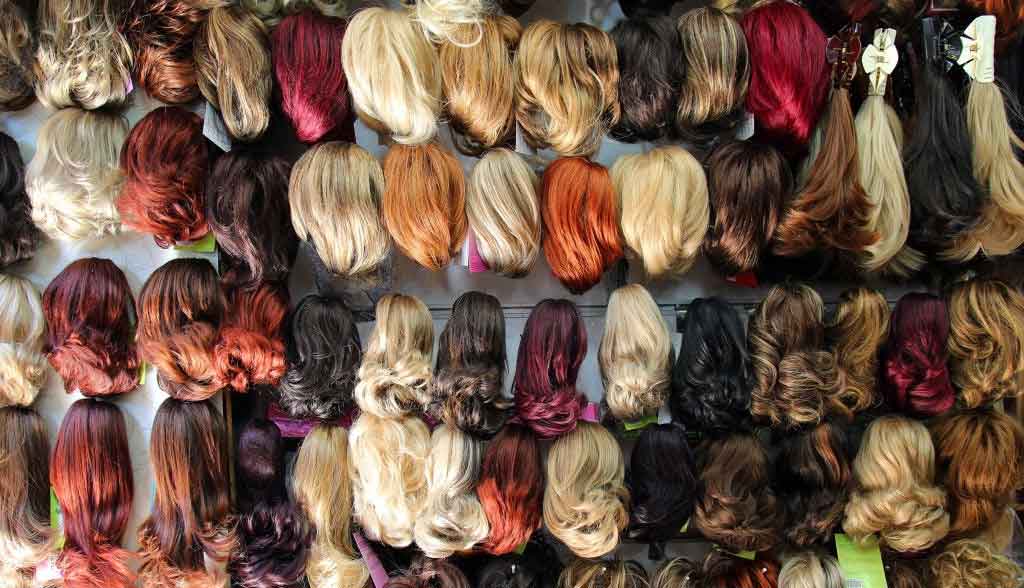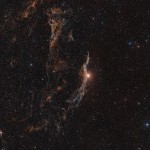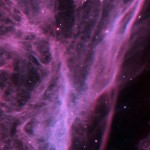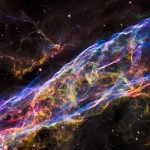Hubble Space Telescope has once again managed to amaze all of humanity by releasing breathtaking images of a distant Nebula floating around 2100 light years from earth. NASA released a flyover 3D image of the Nebula that shows it as a dense formation of heavier gases, namely sulfur, oxygen and hydrogen.
Veil Nebula, which is a nebula of about 100 light years width, was formed out of the Supernova explosion of a star, which was 20 times the size of our Sun. The detonation of the former star took place about 8000 years ago and it must have had our distant ancestors as witness to the event, since NASA scientists estimated that the glow of such a titanic explosion must have equalled the brightness of a full moon.
The Cygnus loop formed out of the remnants of that explosion, continues to expand even today. However, NASA zoomed into a small portion of that remnant called the Veil Nebula. The Veil Nebula acquired a distinctive shape owing to the cavity formed in the nearby interstellar gases from the stellar gas that was released before the supernova explosion. As the shockwaves from the explosion travelled outwards, they interacted with the cavity that had formed and gave the nebula its distinctive features.
The nebula obtains its resplendent colors from the natural elements present in it. The hotter regions of the nebula emit blue color, whereas the less hotter regions emit green and red colors. Also, the variations in the colors of the Nebula are due to variations in temperatures across different locations as well as in the densities of the chemical elements present therein.
Hubble also photographed the Nebula back in 1997 and now the image from 2015 will provide NASA scientists with an interesting opportunity for comparison. With the help of the two images, scientists will be able to gauge how the nebula has evolved and expanded over the last 18 years.
Image gallery of the Veil Nebula captured by the Hubble Space Telescope:
Watch the video showing the zooming in on the Veil Nebula from this link.
###










